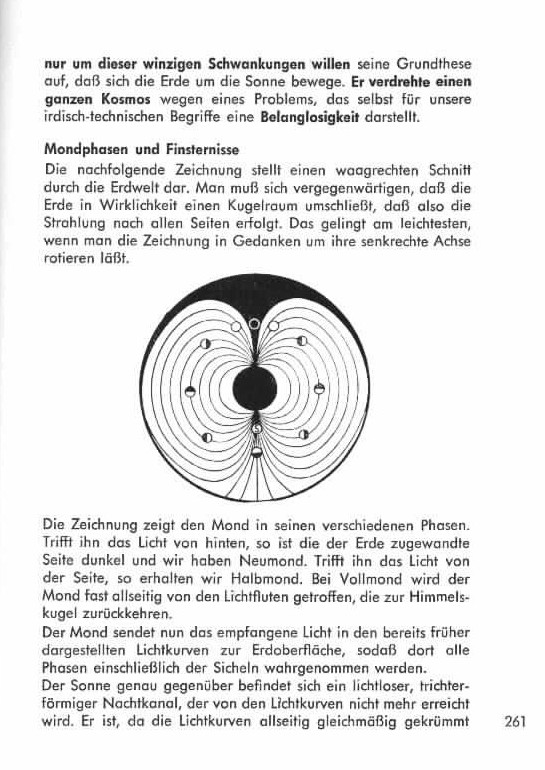Phases of the Moon and Lunar/Solar Eclipses
The sketch below shows a horizontal section through the geocosmos. One has to be aware, that in reality the earth envelopes a spherical space which means that any radiation goes in all directions. You can easily do that in your mind by making the drawing rotate around its vertical axis.

The drawing shows the moon in its different phases. If the light hits the moon from the back, the side facing the earth is dark and we have a new moon. If the light hits the moon from the side we half a half moon. At a full moon it is radiated by light from all sides which then return to the celestial sphere.
The moon will reflect any light received back to the earth on certain curved paths, which have been shown earlier. This makes it possible that all the phases of the moon including the crescent can be seen.
Exactly opposite the sun is a funnel like night canal without any light, since it can not be reached by any light beams. Since all the curves of light are equally curved, the cross section of that canal is round. When the moon passes through it then we have a total lunar eclipse. If the moon only touches the canal a little, then we have a partial eclipse. The moon will then show a dark (light less) disk, which, according to the Copernican theory is interpreted as the shadow of the earth.
Usually the moon bypasses the night canal, since it does not orbit in the same plane as the sun, thus preventing a lunar eclipse and having a full moon instead. For the same reason we seldom see a solar eclipse. If the new moon would always pass in the direction of the sun, then we would have a solar eclipse any time we have a new moon. However, most the time the moon bypasses the sun so far north or south, that it does not cover the sun.
More details can be found in the book by Johannes Lang: "The Geocosmic Theory" (Not yet available in English).
Updated: August 26, 2001